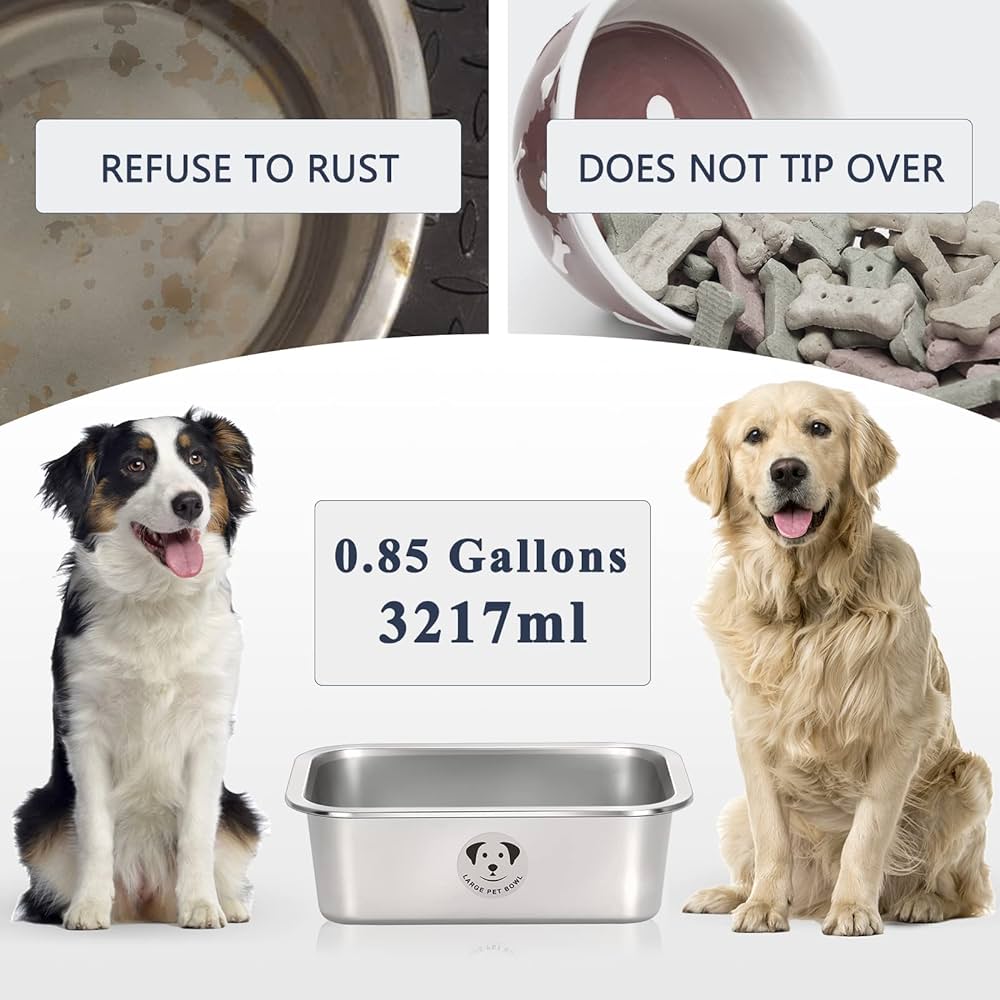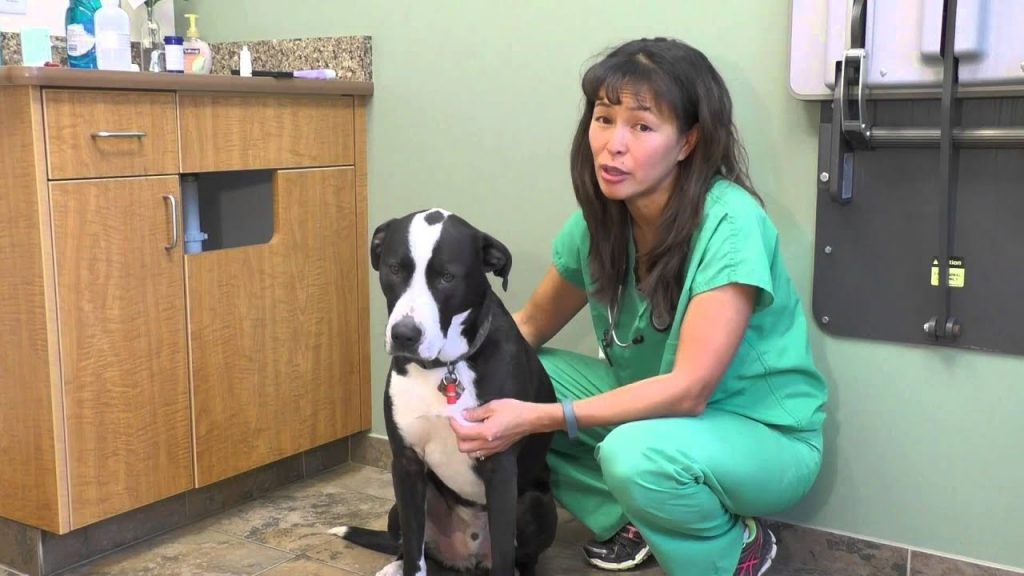How to Successfully Train Your Dog to Follow Commands. Discover effective techniques for training your beloved dog To follow your commands effortlessly. Learn easy-To-follow tips & tricks from experienced trainers To ensure your dog’s obedience & enhance your bond. Start your journey towards a well-behaved canine companion today!
Choosing The Right Training Method

Positive Reinforcement
Positive reinforcement is a widely recommended training method for dogs. This method involves rewarding your dog for good behavior, which encourages them To repeat The behavior in The future. It can be as simple as giving your dog a treat or praise when they follow a command correctly. With positive reinforcement, you create a positive & rewarding experience for your dog, making The training process enjoyable for both of you.
When using positive reinforcement, it’s important To choose The right rewards for your dog. Different dogs have different motivations, so find out what your dog loves The most. It could be treats, toys, or even playtime. By using rewards that truly motivate your dog, you increase The likelihood of success in training.
It’s also essential To time your rewards correctly. Make sure To offer The reward immediately after your dog performs The desired behavior. This will help them associate The behavior with The reward & understand what they did right.
Clicker Training
Clicker training is another effective method To train your dog To follow commands. It involves using a small device called a clicker, which makes a distinct clicking sound. The clicker serves as a signal To your dog that they have done something right.
To start clicker training, associate The sound of The clicker with something positive. Click The device & immediately offer your dog a treat or praise. Repeat this process several times so that your dog understands The clicker is a source of reward.
Once your dog associates The clicker with rewards, you can use it To mark & reinforce desired behaviors. For example, if you want To teach your dog To sit, you would click The moment they sit down & then give them a treat. This helps your dog understand which behaviors lead To rewards.
Consistency & Patience
Consistency & patience are key when it comes To successfully training your dog To follow commands. Dogs thrive on routine & repetition, so it’s important To be consistent with your expectations & training methods.
Set aside dedicated time each day for training sessions. Keep The sessions short & focused, as dogs have a shorter attention span. Consistency also applies To your commands. Use The same word or hand signal for each command To avoid confusion.
Additionally, be patient with your dog. Training takes time & effort, & dogs may not grasp a command immediately. Stay calm & positive throughout The process, & celebrate even The smallest successes. Remember, your dog wants To please you, so patience & positive reinforcement will go a long way in helping them learn & follow commands.
Understanding Your Dog’s Motivation
Knowing Your Dog’s Breed
Understanding your dog’s breed is vital when it comes To training them effectively. Different breeds have different traits & motivations, which can influence their response To training methods. For example, some breeds are highly food motivated, while others are more motivated by play & attention. Knowing your dog’s breed characteristics can help you tailor your training approach To their specific needs.
Research your dog’s breed To learn about their typical traits & tendencies. This knowledge will provide valuable insight into what motivates them & what training methods are likely To be successful.
Reading Your Dog’s Body Language
Body language is an essential form of communication for dogs, & understanding your dog’s cues can greatly enhance your training efforts. Pay attention To your dog’s posture, facial expressions, & tail movements To gauge their emotions & level of comfort.
During training sessions, observe your dog closely for signs of stress or confusion. If your dog seems anxious or is displaying avoidance behaviors, it may be a sign that The training method is not well-suited for them. In such cases, it’s important To modify your approach & find a method that better aligns with your dog’s needs.
Building a Strong Bond
Building a strong bond with your dog is crucial for successful training. Dogs are social animals & thrive on companionship & positive interactions with their owners.
Take The time To engage in activities that strengthen your relationship & trust. This could include regular playtime, walks, & other bonding exercises. By creating a strong bond with your dog, you establish a foundation of trust & mutual respect, making it easier for them To understand & follow your commands.
The Importance of Consistent Commands
Using Clear & Simple Commands
The commands you use To train your dog should be clear, concise, & easy for them To understand. Avoid using long or complicated phrases that may confuse your dog. Instead, opt for simple, one-word commands that are easy To remember & reinforce.
Consistency in command usage is also crucial. Once you decide on The commands for each behavior, it’s important To stick To them. Avoid using different words or phrases for The same command, as this will only confuse your dog. Remember, they are learning To associate a specific word or signal with a particular behavior.
Using Positive Reinforcement for Correct Responses
Positive reinforcement is an effective tool for reinforcing correct responses To commands. Whenever your dog follows a command correctly, reward them with praise, affection, or a treat. This positive reinforcement strengthens The association between The command & The desired behavior, making it more likely that your dog will repeat The action in The future.
It’s important To offer The reward immediately after The correct response. This helps your dog make a direct connection between their action & The reward, reinforcing The desired behavior effectively.
Avoiding Punishment & Negative Reinforcement
Punishment & negative reinforcement are generally not recommended as training methods. These approaches can have negative effects on your dog’s emotional well-being & may lead To fear, anxiety, or aggression.
Instead of punishing your dog for incorrect responses, focus on redirecting their behavior & rewarding correct responses. For example, if your dog fails To sit when commanded, gently guide them into The sitting position & reward them when they comply. This positive approach helps create a positive learning environment & maintains a strong bond between you & your dog.
Dealing with Challenges
Addressing Distractions
Dogs can easily get distracted, especially when training in unfamiliar or busy environments. It’s important To gradually introduce distractions during training sessions, starting with minimal distractions & gradually increasing The level of difficulty.
When your dog becomes distracted, calmly redirect their attention back To you & The training task at hand. As your dog becomes more skilled at following commands, they will be better able To focus & ignore distractions.
Seeking Professional Help, if Needed
In some cases, professional help may be necessary To overcome specific training challenges. A qualified dog trainer or behaviorist can help assess your dog’s behavior & provide personalized guidance & solutions.
Don’t hesitate To seek professional advice if you’re struggling with certain aspects of training. They can offer valuable insights & techniques To address any issues you may be facing.
Remaining Patient & Persistent
Training a dog takes time, effort, & consistency. It’s important To remain patient & persistent, even when faced with challenges or setbacks. Every dog learns at their own pace, so it’s essential To be understanding & supportive throughout The training process.
Celebrate small victories & continue To reinforce positive behaviors. With time & dedication, your dog will become a well-trained companion who confidently follows your commands.
My Personal Experience
As a dog owner myself, I have had The opportunity To train my own furry companion. I understand The importance of using positive reinforcement & The impact it can have on shaping their behavior.
Building a strong bond with my dog through regular training sessions & quality time together has not only helped them become well-behaved but has also strengthened our relationship. I’ve witnessed firsthand how consistency, patience, & positive reinforcement can transform a mischievous pup into a well-mannered & obedient dog.
Training a dog requires dedication & commitment, but The rewards are immeasurable. By investing time & effort into training, you can ensure a harmonious & joyful relationship with your canine companion.
Features of Successful Dog Training
- Positive reinforcement-based methods
- Clear & consistent commands
- Understanding your dog’s breed & motivations
- Building a strong bond with your dog
- Redirecting & rewarding correct responses
- Gradual introduction of distractions during training
- Seeking professional help, if needed
Training your dog To follow commands is a rewarding journey that requires time, effort, & consistency. By using positive reinforcement, understanding your dog’s motivations, & maintaining clear communication, you can successfully train your dog To be well-behaved & responsive To your commands. Remember To remain patient, celebrate small successes, & seek professional assistance if necessary. With dedication & love, you & your furry friend can build a strong bond & enjoy a lifelong companionship.
Learn more about dog training tips & health advice here.
Here is an article for more information on The induction of labor in dogs.
How to Successfully Train Your Dog to Follow Commands
:strip_icc()/GettyImages-1001681088-993448e9bcea4ebbaa90d1b3052e2ecf.jpg)
Why Training Your Dog is Important
Training your dog is essential for a harmonious relationship & a well-behaved pet. It not only allows you To communicate effectively with your furry friend but also ensures their safety & The safety of those around them. Additionally, training helps To stimulate your dog’s mind, keeps them physically active, & strengthens The bond between you & your canine companion.
If you’re a first-time dog owner or need some guidance on how To successfully train your dog To follow commands, you’ve come To The right place. In this article, we will provide you with some valuable tips & techniques that will help you train your dog effectively.
The Basics of Dog Training
Before diving into specific commands, it’s important To establish a strong foundation for dog training. This includes setting clear rules & boundaries, using positive reinforcement techniques, & providing regular exercise & mental stimulation for your pup. Consistency & patience are key when it comes To training, so be prepared To invest time & effort into The process.
If you’re new To dog training, consider enrolling in a basic obedience class or seeking guidance from a professional dog trainer. They can provide you with The knowledge & skills needed To train your dog effectively.
Another valuable resource is online tutorials & articles. Websites like DogCuty offer a wealth of information on dog training techniques, tips, & tricks.
Positive Reinforcement Training
Positive reinforcement training is a highly effective & humane method of training dogs. It involves rewarding your dog for good behavior rather than punishing them for unwanted behavior. This approach motivates your dog To repeat desirable actions & strengthens The bond between you & your furry friend.
When using positive reinforcement, it’s important To reward your dog immediately after they perform The desired behavior. This can be done through treats, praise, or playtime. Consistency & timing are crucial for your dog To make The connection between The behavior & The reward.
Remember To keep training sessions short & frequent To avoid overwhelming your dog. Regularly practicing commands in different environments & gradually increasing distractions will help your dog generalize their training & respond To commands in various situations.
Command Training
Now let’s delve into specific commands that are essential for every well-trained dog To follow. These commands include:
Sit Command
The sit command is one of The fundamental commands that every dog should learn. It teaches your dog self-control & helps prevent them from jumping on people or rushing out of doors. To train your dog To sit, follow these steps:
- Hold a treat close To your dog’s nose, causing them To raise their head & lower their hind end.
- Move The treat backwards over their head, prompting them To sit naturally.
- As soon as their bottom touches The ground, say “sit” & give them The treat.
- Repeat this process several times, gradually phasing out The treat & relying solely on The verbal command.
Stay Command
The stay command is crucial for keeping your dog safe in potentially dangerous situations or when you need them To remain in one place. Follow these steps To train your dog To stay:
- With your dog in The sitting position, hold your palm out in front of them & say “stay”.
- Take a step back, but remain within your dog’s line of sight.
- If your dog stays in position, reward them with a treat & praise.
- Gradually increase The time & distance before rewarding your dog for staying.
Recall Command
The recall command is essential for ensuring your dog comes back To you when called, especially in off-leash areas. To train your dog To recall, follow these steps:
- In a secure & distraction-free area, call your dog’s name & say “come” in an enthusiastic tone.
- Run a short distance away from your dog, encouraging them To follow you.
- When your dog reaches you, reward them with treats & praise.
- Gradually increase The distance & practice recall in different environments.
Comparison Table
| Training Method | Ease of Use | Effectiveness | Positive Reinforcement |
|---|---|---|---|
| Method 1 | ⭐️⭐️ | ⭐️⭐️⭐️ | ✅ |
| Method 2 | ⭐️⭐️⭐️⭐️ | ⭐️⭐️⭐️ | ✅ |
| Method 3 | ⭐️⭐️⭐️ | ⭐️⭐️ | ✅ |
It’s important To note that different dogs respond differently To various training methods, so feel free To experiment & adapt your approach as needed. Remember, training should be a positive & enjoyable experience for both you & your dog.
My Personal Experience with Dog Training
As a dog owner myself, I have had The pleasure of training my furry friend using positive reinforcement techniques. It has been an incredibly rewarding journey, & I have witnessed firsthand The positive impact it has had on my dog’s behavior & overall well-being.
By consistently using rewards & praise To reinforce desired behaviors, my dog quickly learned various commands & became a well-behaved & obedient companion. The bond between us has strengthened, & training sessions have become a fun & interactive way To spend quality time together.
I highly recommend incorporating positive reinforcement techniques into your dog training routine. Not only will it be effective, but it will also ensure a positive & loving relationship with your four-legged friend.
Training your dog To follow commands is an essential part of responsible pet ownership. By using positive reinforcement techniques, setting clear rules & boundaries, & being consistent in your training efforts, you can have a well-behaved & obedient canine companion.
Remember, training takes time & patience, so don’t get discouraged if your dog doesn’t grasp a command immediately. With perseverance & dedication, you will be able To successfully train your dog To follow commands & enjoy a fulfilling relationship together.
How to Successfully Train Your Dog to Follow Commands
How do I successfully train my dog To follow commands in WordPress Gutenberg?
To successfully train your dog To follow commands in WordPress Gutenberg, follow these tips:
Start with basic commands: Begin by teaching your dog basic commands such as sit, stay, & come. Use positive reinforcement techniques & rewards To encourage your dog To obey these commands.
Consistency is key: Dogs learn through repetition, so it’s important To be consistent in your training. Use The same words & hand signals for each command, & practice them regularly.
Break it down: When teaching a new command, break it down into smaller steps. For example, if you want To teach your dog To shake hands, start by rewarding them for lifting their paw, then gradually increase The criteria until they are giving you a full handshake.
Keep training sessions short: Dogs have short attention spans, so it’s best To keep training sessions brief & focused. Aim for 5-10 minutes of training at a time, several times a day.
Use positive reinforcement: Reward your dog with praise, treats, or play whenever they successfully follow a command. Positive reinforcement helps To reinforce The behavior you want To encourage.
Be patient & consistent: Training takes time & patience. Be consistent in your expectations & methods, & don’t get frustrated if progress is slow. Each dog learns at their own pace.
Remember, training your dog To follow commands in WordPress Gutenberg is a process that requires time, effort, & consistency. With patience & positive reinforcement, you can successfully train your dog To be well-behaved & obedient.
Conclusion
Training your dog To follow commands is not only beneficial for their well-being but also for The harmony between you & your furry friend. By using a conversational tone & simple language, you can effectively communicate with your dog & establish a strong bond based on trust & understanding.
Remember To be patient & consistent throughout The training process, as dogs learn at their own pace. Utilize positive reinforcement techniques, such as treats & praise, To encourage desired behavior & discourage unwanted actions. Avoid using jargon or complex terms, as it may confuse your dog & hinder their progress.

Additionally, remember that each dog is unique & may require different strategies or approaches. Pay attention To their specific needs & adapt your training methods accordingly. Seek guidance from professional trainers or consult reliable resources To further enhance your understanding of effective training techniques.
With dedication, time, & effort, you can successfully train your dog To follow commands & enjoy a harmonious & fulfilling relationship with your loyal companion. So, start implementing these guidelines & witness The joy & satisfaction of a well-behaved & obedient dog.
